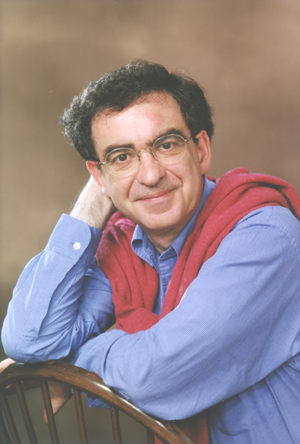IEEE Computer, EMBS & GRSS Societies and GBC/ACM
7:00 PM, Thursday, 20 September 2018
MIT Room 32-G449 (Kiva)
This talk will be webcast on the MIT CSAIL Youtube channel https://www.youtube.com/channel/UCYs2iUgksAhgoidZwEAimmg/live beginning at 7pm.The Science and the Engineering of Intelligence
Tomaso Poggio, MIT

In recent years, artificial intelligence researchers have built impressive systems. Two of my former postdocs, Demis Hassabis and Amnon Shashua, are behind two recent success stories of AI: AlphaGo and Mobileye, based on two algorithms originally suggested by discoveries in neuroscience: deep learning and reinforcement learning. To create artifacts that are as intelligent as we are, we need several additional breakthroughs. The first half of the talk will discuss the question of what they may be and where they may come from. I will argue that at the level of the hardware, biophysical properties of dendritic trees suggest more powerful nonlinearities than today's Rectified Linear Units (RELUs). At the level of the computation, basic aspects of visual intelligence require architectures beyond supervised and unsupervised learning. In the second half of the talk, I will sketch recent theoretical results, based on classical machine learning, to explain why deep networks work as well as they do.
Tomaso Poggio is one of the founders of computational neuroscience. He pioneered models of the fly's visual system and of human stereovision, introduced regularization theory to computational vision, made key contributions to the biophysics of computation and to learning theory, developed an influential model of recognition in the visual cortex and more recently a theory of invariant representations in sensory cortex.
He is the Eugene McDermott Professor in the Department of Brain and Cognitive Sciences and at the Computer Science and Artificial Intelligence Laboratory (CSAIL). He is a founding member of the McGovern Institute, and is the director of the Center for Brains, Minds, and Machines (CBMM), a multi-institutional collaboration headquartered at the McGovern Institute. He joined the MIT faculty in 1981, after ten years at the Max Planck Institute for Biology and Cybernetics in Tubingen, Germany. He received a Ph.D. in 1970 from the University of Genoa. Poggio is a Foreign Member of the Italian Academy of Sciences and a Fellow of the American Academy of Arts and Sciences. He was awarded the 2014 Swartz Prize for Theoretical and Computational Neuroscience.
The research in the Poggio Lab is guided by the belief that learning is at the core of the problem of intelligence, both biological and artificial. Learning is thus the gateway to understanding how the human brain works and for making intelligent machines. Thus, Poggio Lab studies the problem of learning within a multidisciplinary approach.
Current research in the Poggio Lab is relevant not only for understanding higher brain function, but also for the mathematical and computer applications of statistical learning. Three basic directions of research in his group are: mathematics of statistical learning theory, engineering applications (in computer vision, computer graphics, bioinformatics and intelligent search engines) and neuroscience of visual learning. (1) In the theory domain, he has focused on the foundations of learning theory and on a formal characterization of necessary and sufficient conditions for predictivity of learning. (2) The engineering applications include bioinformatics projects, computer vision for scene recognition and trainable, man-machines interfaces. (3) In the computational neuroscience area, his research is centered on object recognition and, in particular, on a quantitative theory of the ventral stream in the visual cortex underlying object recognition and object categorization. The theory and its computer implementation has become a tool for analyzing, interpreting and planning experiments in extensive collaborations with experimental neuro-scientists. This should lead to a better and more coherent understanding of the neural mechanisms of visual recognition and of the normal and abnormal functions of the cortex.
This joint meeting of the Boston Chapters of the IEEE Computer, Engineerng in Medicine and Biology (EMBS) and Geographic and Remote Sensing (GRSS) Societies and GBC/ACM will be held in MIT Room 32-G449 (the Kiva conference room on the 4th floor of the Stata Center, buildng 32 on MIT maps) . You can see it on this map of the MIT campus.
Up-to-date information about this and other talks is available online at https://ewh.ieee.org/r1/boston/computer/. You can sign up to receive updated status information about this talk and informational emails about future talks at https://mailman.mit.edu/mailman/listinfo/ieee-cs, our self-administered mailing list.
Updated: Aug 13, 2018.